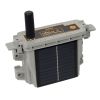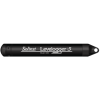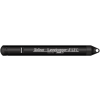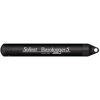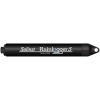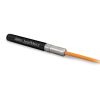Solinst LevelSender 5 Cellular Telemetry System
The Solinst LevelSender 5 is a simple, low-cost system designed to wirelessly send data from Solinst dataloggers in the field, via cellular communication, to multiple emails and an SMS recipient.
Features
- Sized to fit inside a standard 2" well casing
- Remote data sent via email or SMS messaging
- Use database to import to a website or list
- Free ground shipping
- Expedited repair and warranty service
- Lifetime technical support
- More
Overview
The Solinst Level Sender 5 receives data on any chosen smart device. Solinst provides the option of a pre-programmed LevelSender with a 4G SIM APN setup. The Solinst SIM card scans multiple networks and connects to the strongest signal. Low-cost, data-only plans are billed directly through Solinst for convenience and can be purchased here https://solinstcloud.com/login/register.php
*Verizon SIM cards are not compatible
Compact Remote Stations
Can be discreetly installed inside a 2" diameter monitoring well or other housing. Each LevelSender 5 device has a single port to connect one datalogger. An optional splitter provides connections for two dataloggers, allowing the installation of a Levelogger and Barologger in the same well. Along with water level, temperature, conductivity, barometric, or rainfall data, battery level, and status updates from the remote LevelSender 5 are received with each data report.
Solinst Cloud
LevelSender telemetry system users can opt-in to the Solinst Cloud web-based data-management tool that enables the configuration and management of remote devices. Quickly view and assess remote projects, set alarms, download reports, and more using the online dashboard. Data plans start at no cost, with the option for expanding to low-cost plans for managing a larger network of Leveloggers.
LevelSender telemetry devices work with the LevelSender 5 using the following loggers:
- Solinst Levelogger 5 Series
- LevelVent 5
- Levelogger Edge Series
- LevelVent loggers
- Modem: 4G LTE UE Category M1/NB1 device (850/900/1800/1900 MHz)
- SIM Card: Standard SIM (15mm x 25mm); option of Solinst SIM or through service provider of client’s choice
- Communication: Email or SMS data transfer, Dynamic IP
- Antenna: SMA Male Monopole 2dBi
- Data File Type: text, .xle, .sqlite
- Sampling Interval: 1 minute - 99 hours
- Reporting Interval: 5 minutes - 99 hours
- Schedule Programming: Directly via USB-C connection on the LevelSender or remotely via LevelSender Software (email)
- Power Supply: 3 x AA 1.5V replaceable lithium batteries
- Battery Life Example: Hourly sampling and daily reporting: 4 years with 1 datalogger, 3.3 years with 2 dataloggers
- Operating Temperature: -20ºC to 60ºC
- IP Rating: IP67
- Materials: Black Delrin, 316 stainless steel
- Size: 2.5" x 9.375" (with antenna folded down)
- Weight: 16.9 oz. (478 grams)
- Compatible Dataloggers: Levelogger 5 Series dataloggers, LevelVent 5, AquaVent 5, as well as previous versions of the LevelVent and AquaVent, and Levelogger Edge Series dataloggers
- Number of Connected Leveloggers: 1, or 2 using a splitter
- Barometric Compensation: Internal barometer for automatic barometric compensation of water level data if a Barologger is not being used (not required for vented loggers)
- Internal Barometer Range: 30 kPa - 120 kPa
- Internal Barometer Accuracy: ±0.2 kPa (20 cm)
- (1) LevelSender
- (1) 2" Well Cap
- (1) Hanger Bracket
- (1) Set of Batteries
- (1) Antenna
In The News
From Paddles to Phytoplankton: Studying Vermont’s Wildest Lakes
For six months of the year, Rachel Cray, a third-year PhD student at the Vermont Limnology Laboratory at the University of Vermont, lives between a microscope and her laptop, running data. For the other six months, she is hiking and canoeing four of Vermont’s lakes, collecting bi-weekly water samples. Cray studies algal phenology across four lakes in Vermont, US, that have low anthropogenic stress—or in other words, are very remote. Funded by the National Science Foundation Career Award to Dr. Mindy Morales, the lakes Cray researches part of the Vermont Sentinel Lakes Program, which studies 13 lakes in the area and, in turn, feeds into the Regional Monitoring Network, which operates in the Northeast and Midwest US.
Read MoreReimagining Water Filtration: How Monitoring and Science Enhance FloWater Filtration Systems
Over 50% of Americans think their tap water is unsafe , according to the Environmental Working Group (EWG). Other recent surveys have found that number to be as high as 70% of persons surveyed. Whether due to increased public awareness of water quality issues or confusion about how municipal water sources are regulated, there is a clear distrust of tap water in the United States. According to industry expert Rich Razgaitis, CEO and co-founder of the water purification company FloWater, this issue creates a damaging cycle. Razgaitis explained that the health and environmental problems associated with contaminated water aren’t the only issues. As people become increasingly aware that some tap water is unsafe, they resort to bottled water.
Read MoreMonitoring New Hampshire’s Aquatic Ecosystems: Continuous Data Collection in the Lamprey River Watershed
New Hampshire’s aquatic ecosystems provide a range of ecosystem services to the state and region. Resources and services like clean water, carbon storage, climate regulation, nutrient regulation, and opportunities for recreation all depend on New Hampshire’s aquatic ecosystems remaining healthy. Jody Potter, an analytical instrumentation scientist at the University of New Hampshire (UNH), is studying these aquatic ecosystems in hopes of developing an improved understanding of ecosystem services and their interactions with climate change, climate variability, and land use changes. [caption id="attachment_39799" align="alignnone" width="940"] Aquatic sensors in the Merrimack River in Bedford, NH, with I-293 in the background.
Read More
















